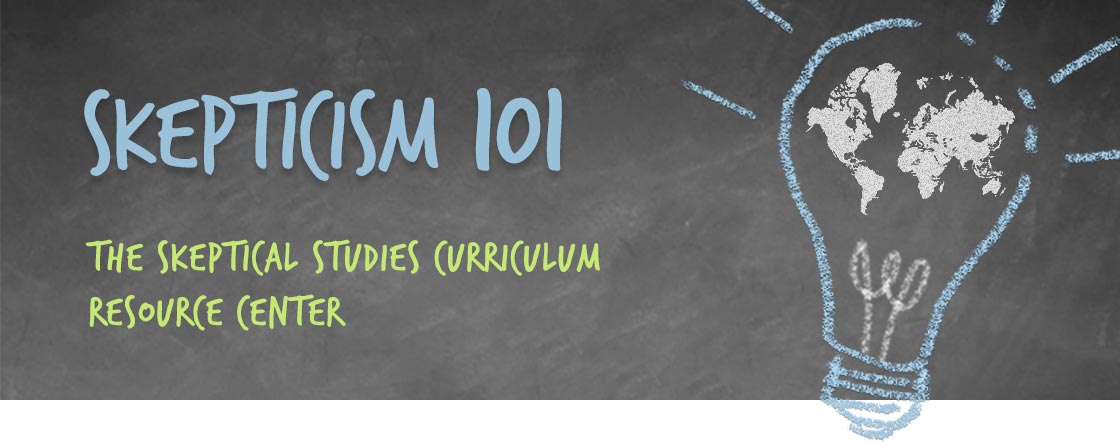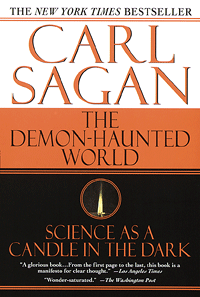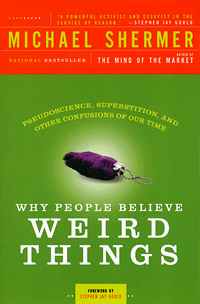This course was taught at the University of Central Oklahoma during the fall 2011 semester
Excerpt from Syllabus
My goal for this course is to have each student leave with increased critical thinking and reasoning skills and the ability to apply those skills in his or her environment. Specifically, this course will teach students how to apply empirical, scientific modes of thinking in explaining the causes of various phenomena, from everyday human behavior to supposedly paranormal events. Students will become skilled in differentiating between scientific and pseudoscientific explanations of things such as psychic abilities, witchcraft, alien abduction, astrology, recovered memories, and the healing properties of various alternative medicines and techniques. In addition, students will come to understand the various ways in which we can be fooled, both by others and by ourselves, thanks to the way the human brain processes information.
DOWNLOAD THIS RESOURCE
(110 kb PDF)
This book was required reading for the following courses: (1) “Skepticism 101: How to Think Like a Scientist Without Being a Geek” taught by Michael Shermer, (2) “Weird Science” taught by John Donovan, (3) “The Scientific Method: Critical & Creative Thinking” taught by Stephen Sekula et al., and (4) “Studies in Behavior: Critical Thinking” taught by Evelyn Buday.
“The great astronomer and science writer challenges New Agers and explains social phenomena like UFOs, alien abductions, recovered memories, satanic cults, witch crazes, hallucinations, and how to detect baloney. This is Sagan’s most popular book among skeptics, filled with quotable maxims, popular among college professors as a supplemental text for students, but a classic for everyone who cares about living in a sane and safe world without superstition.” —Skeptic
“Eminent Cornell astronomer and bestselling author Sagan debunks the paranormal and the unexplained in a study that will reassure hardcore skeptics but may leave others unsatisfied. To him, purported UFO encounters and alien abductions are products of gullibility, hallucination, misidentification, hoax and therapists’ pressure; some alleged encounters, he suggests, may screen memories of sexual abuse. He labels as hoaxes the crop circles, complex pictograms that appear in southern England’s wheat and barley fields, and he dismisses as a natural formation the Sphinx-like humanoid face incised on a mesa on Mars, first photographed by a Viking orbiter spacecraft in 1976 and considered by some scientists to be the engineered artifact of an alien civilization. In a passionate plea for scientific literacy, Sagan deftly debunks the myth of Atlantis, Filipino psychic surgeons and mediums such as J.Z. Knight, who claims to be in touch with a 35,000-year-old entity called Ramtha. He also brands as superstition ghosts, angels, fairies, demons, astrology, Bigfoot, the Loch Ness monster and religious apparitions. (Feb.)” —Publishers Weekly
BUY THIS BOOK
from Shop Skeptic
This book was required reading for the following courses: (1) “Skepticism 101: How to Think Like a Scientist Without Being a Geek” taught by Michael Shermer, (2) “Weird Science” taught by John Donovan, and (3) “Skepticism, Science, & the Paranormal” taught by Martin Bridgstock.
In this age of scientific enlightenment, many people still believe in mind reading, past-life regression theory, New Age hokum, and alien abduction. A no-holds-barred assault on popular superstitions and prejudices, Why People Believe Weird Things debunks these nonsensical claims and explores the very human reasons people find otherworldly phenomena, conspiracy theories, and cults so appealing. Michael Shermer takes on science luminaries like physicist Frank Tippler and others, who hide their spiritual beliefs behind the trappings of science.
Shermer, science historian and true crusader, also reveals the more dangerous side of such illogical thinking, including Holocaust denial, the recovered-memory movement, the satanic ritual abuse scare, and other modern crazes. Why People Believe Weird Things is an eye-opening resource for the most gullible among us and those who want to protect them.
BUY THIS BOOK
from Shop Skeptic











